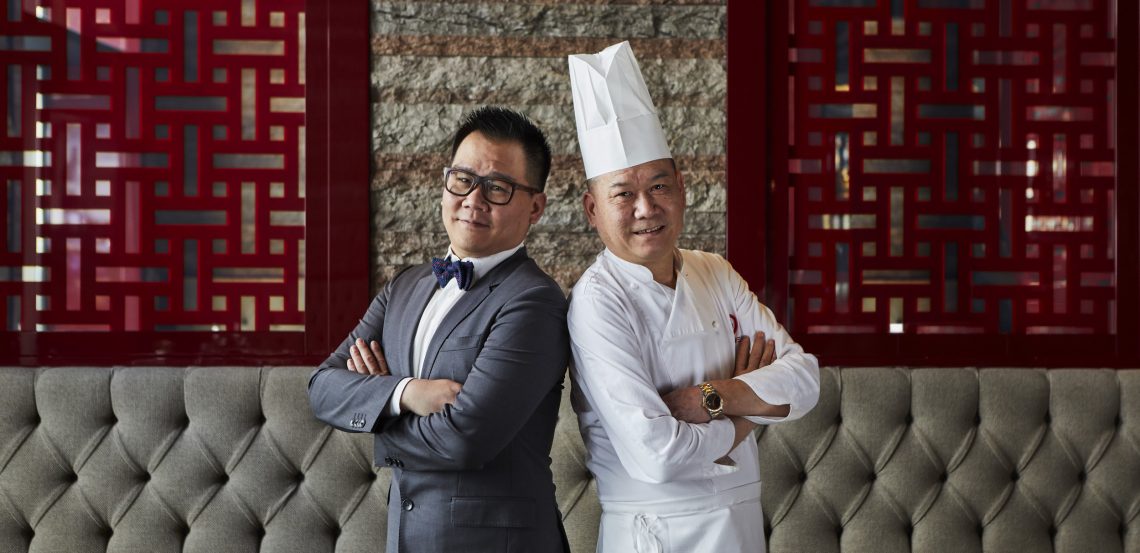About us
Since its opening in 2010, Bon Wei (bon French for “good” and wei, Chinese for “taste”) has been offering up cuisine based on fresh ingredients of the highest quality – in other words, a culinary experience that is as “high” as possible, devoid of misleading clichés, with a view to allowing Italian diners to appreciate authentic Chinese cuisine. From the outset, the owners have been Yike Weng and Chiara Wang Pei.
Zhang Guoqing is the executive chef, while his son Zhang Le – manager of the restaurant since 2014 – became a partner in 2017.
In the year of the Milan EXPO (2015), in partnership with the Italy-China Foundation and its School of Ongoing Education, Bon Wei put together an authentic culinary programme to enable diners to get a handle, through eight thematic meals, on the most important regional Chinese dishes, which have today been channelled into the Regional Specialities Menu – very much the restaurant’s pride and joy.
Chef ZHANG GUOQING

Originally from Whenzhou, in the Zhejiang region, Chef Zhang was born on 28 September, 1957.
Married to Wu Yuehe, he has a son named Zhang Le, who has been the manager of Bon Wei in 2014 and since 2017 has also been a partner in the restaurant together with Yike Weng and Chiara Wang Pei.
Having arrived in Italy in 1989, he worked in Milan at the Giardino di Giada and at the then- luxurious Shanghai Club. In 1994, he moved to Padua, where he opened the city’s first Chinese rotisserie, called “9 DRAGO”, which served 60 or so classic takeaway dishes from the Cantonese repertoire, which was at the time the only version of oriental cuisine about which there was any knowledge in Italy. This traditional rotisserie was furnished with the most popular of Chinese icons – red lanterns and dragons – but it was very much an innovative eatery for the Padua of the time.
In China, when Chef Zhang was a young man, one did not attend professional cooking schools, which at the time were thin on the ground; rather, one learned the ropes on the job, working alongside great chefs. That was how it was for him, too.
In 2004, Chef Zhang opened his “SINGAPORE” restaurant, at Ponte San Nicolò, just outside Padua. This stylish 60-cover restaurant, with its red walls and cobalt-blue ceiling, was furnished with time-honoured pieces from China. Thanks to these refined touches, it succeeded in distancing itself from the generally low-rent image of China that was widespread in Italy at the time. The menu here included 110 Cantonese dishes, but the seeds were sown for a development of the whole concept.
Painstaking searches were conducted to source the best ingredients – with fresh fish from the Chioggia fish market complemented by the finest Italian beef – and the recipes soon began to take on a distinctive character: crispy duck, Kung Pao chicken and Singapore-style tossed noodles. And it was in Padua that he met Yike Weng, a restaurateur who managed KYOTO in Milan – which was one of the first successful Japanese restaurants to be run by Chinese people – and who is today an entrepreneur and the owner of Dim Sum.
In November 2010, together with Yike Weng he then opened Bon Wei in Milan, entrusting the interior design and image of the restaurant to the architect and designer Carlo Samarati, who in his work succeeds in encapsulating the style of contemporary China, shorn of outdated or folksy ethnic elements.
The initial period saw the partners engaged on the effort to accustom Milanese diners to the concept of a Chinese haute cuisine restaurant, investing heavily in advertising and also in a press office and marketing agency (still being used to this day). In parallel, the culinary choices were lauded by the main guides, including Michelin. As Le Zhang explains today: “It was immensely satisfying for us to see Chinese cuisine recognised in Italy, too, and it was particularly gratifying that we were the standard bearers”.
In 2014, in the run-up to the EXPO in Milan the following year, the founders came up with the concept of a showcase for regional Chinese cuisine. In a certain sense, this was the natural evolution of the Bon Wei approach. While at the beginning the focus was on getting across the idea that Chinese cooking could be haute cuisine, once this message had been transmitted they then worked – together with an exceptional partner, the Italy-China Foundation – to explain that Chinese cuisine is not a single entity: it is far more than the universally recognised Cantonese variant; rather, there are all manner of regional specialities
After two years of working on the individual Gastronomic Regions (1 December 2014 – 28 November 2016), the chef designed a new menu with 24 Regional Specialities, which diners will find are now available alongside the classic restaurant menu, making a total of around 100 dishes.

















